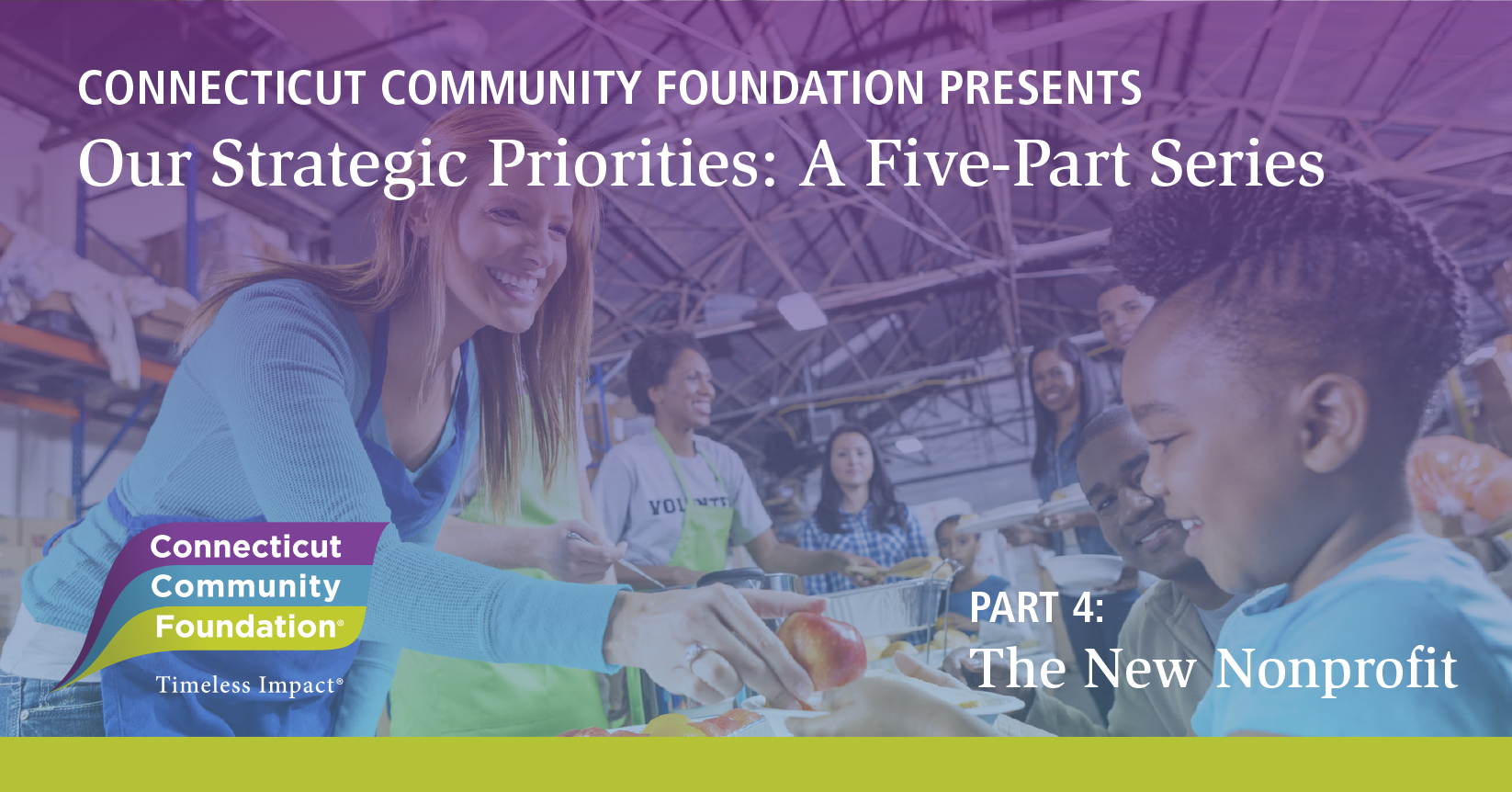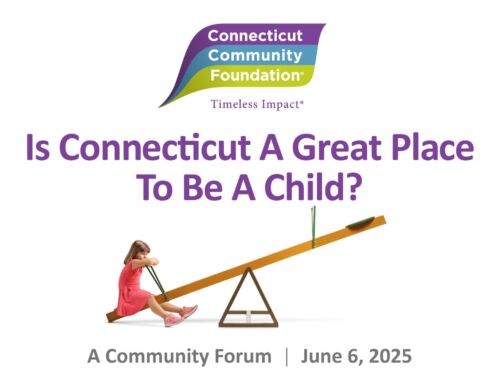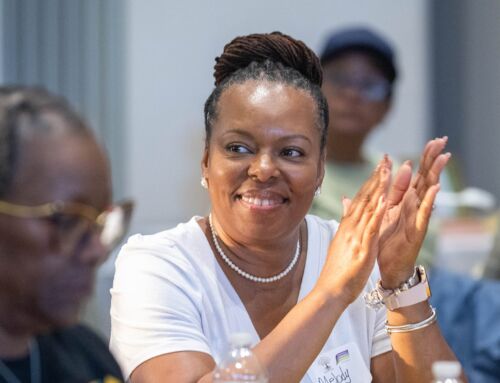
Work long enough in the nonprofit and philanthropic communities and you’ll encounter “the overhead myth”. It’s when government agencies, foundations, and donors place a higher value on money spent on programming versus money spent on a nonprofit’s general operating budget. “People want to know exactly how much is going to programming,” says Stephen Seward, veteran nonprofit fundraiser and Connecticut Community Foundation board member. “Meanwhile, gen ops is viewed as overhead. It’s money that’s if not wasted, then at least boring. But that belief falls short of how organizations are actually run.”
Just ask Loraine Shea, president and CEO of Easterseals of Greater Waterbury, who will tell you these funds are essential to basic functioning. “When I arrived at Easterseals six years ago there were some employees that didn’t even have email,” she says. “We’re spread out over eleven locations so that was task number one.” Shea also notes that general operating money is crucial to programming. “Every new program has startup costs,” she says. “If there’s a community need and Easterseals wants to create a new program, we can’t do that unless we have unrestricted money to develop the program, to hire staff, etc. We may not start getting reimbursed from a government agency for six months to a year.”
Perhaps this is why there’s a movement, both in our 21-town service area and in the nonprofit world in general, toward something called capacity building. “The overriding mission of capacity building is to strengthen an organization’s internal operations,” Seward says. “Capacity building means resources beyond fundraising. It means spending beyond programs.”
As we move forward along our strategic direction, the Foundation is encouraging both nonprofits and individual donors to take a more holistic approach to funding. This is especially important given the focus of the strategic plan on race and equity. In previous articles about health care disparities and economic opportunities , the Foundation could position itself as a helpful community partner. When it comes to capacity building, however, it’s important that we also turn the race and equity lens on ourselves.
“Philanthropy is not immune to race and equity problems,” says Ellen Carter, the Foundation’s vice president of program and strategy. “In capacity building that’s where the bias of the mostly white philanthropic community shows up. We tend to judge a nonprofit’s infrastructure. Or on how well they write a grant to the standards of white professionalism. But if we do that we’re going to miss out on the people best equipped to help, the people from communities of color and who most effectively serve those communities.”
Subira Gordon has seen the conceptual shortcomings of the philanthropic community firsthand. Gordon is a Connecticut Community Foundation trustee and president of ConnCAN, a nonprofit that is working on education reform at the systems level. “When the pandemic hit we saw the response was a very white, privileged response,” she says. “The immediate answer was to transition to online learning because that made the most sense to people who had easy access to WiFi. So, what did philanthropy do? They bought computers because that’s what people with privilege thought would help.” Gordon goes on to note that in some cases the computers helped, but in other cases, they weren’t what students really needed. What was problematic was the entire process. “We didn’t ask the community,” she says. “We didn’t talk to the community about what they wanted and needed when it came to a pandemic response.”
Fortunately, philanthropy is changing. It starts with the fundamentals of the relationship. “Capacity building is moving away from the purely functional and embracing the intangible,” says Melissa Harris, director of client services at FIO, a consultancy offering support for nonprofits, foundations, collaboratives, government agencies, and their boards. “We’re encouraging funders and donors to look at an organization’s relationships, its vision or mission, and its inherent strengths, like the ability to build trust in the community it serves.” Harris stresses that not every organization needs to look the same, nor does it need to check off certain boxes in terms of a white professional standard of good. “If an organization has great community relationships then do they need a strong financial management system in-house?” she says. “Or can they outsource that function?”
Anne Yurasek, who is the managing principal and has worked with the Foundation on capacity-building efforts, adds that there’s a trend in philanthropy toward unrestricted funds given out over a multi-year term. “The goal is for the philanthropic community to center the grantee,” she says. “Ultimately it’s about investment. Invest in community leaders, in the communities themselves. Be flexible. Be trusting. Figure out how the grantee wants to use those dollars and then support them.” Ellen Carter of the Foundation echoes this idea. “We want to listen to nonprofits,” she says. “We want to hear their goals and how they want to achieve them, then trust them to know what they need and what’s best for their organization.”
Carter notes that both the philanthropic world and the nonprofit world are ready and eager to move in this new direction. One of the remaining questions is how donors will respond. “People like supporting programs because it’s tangible,” she says, adding that wanting that tangible feeling is the most human thing in the world. “When you support capacity building it can feel more nebulous,” she says. “And that can be challenging. We encourage donors to look at the mission rather than the program and to try to get comfortable with maybe not knowing the exact impact. Because there may not be hard data that can express what an organization did, even if they brought about a meaningful change.”
Stephen Seward, who’s spent his entire career doing traditional fundraising in the old model, agrees that the new approach can mean an adjustment. But he also notes that the change in perspective isn’t as radical as it may seem. “Donors want to be effective,” he says. “Unrestricted funds are one of the best ways to strengthen an organization because they know their clients best and they know their work best. Trust them. Besides, if a nonprofit is worth funding for a project, then they’re worth funding in general.”
Finally, Subira Gordon argues that the change in how nonprofits are supported doesn’t have to be absolute. “We need to get away from the assumption that white normative culture is what’s right,” she says. “But we also owe communities of color in helping them figure out how to succeed in the system as it is today. In some cases, you can’t apply for a grant if you can’t navigate the traditional system of funding. So it’s not an ‘or’ but an ‘and’. We need to both help right now and change the system. That means skilling up nonprofits while also honoring what grassroots communities have to offer.”







